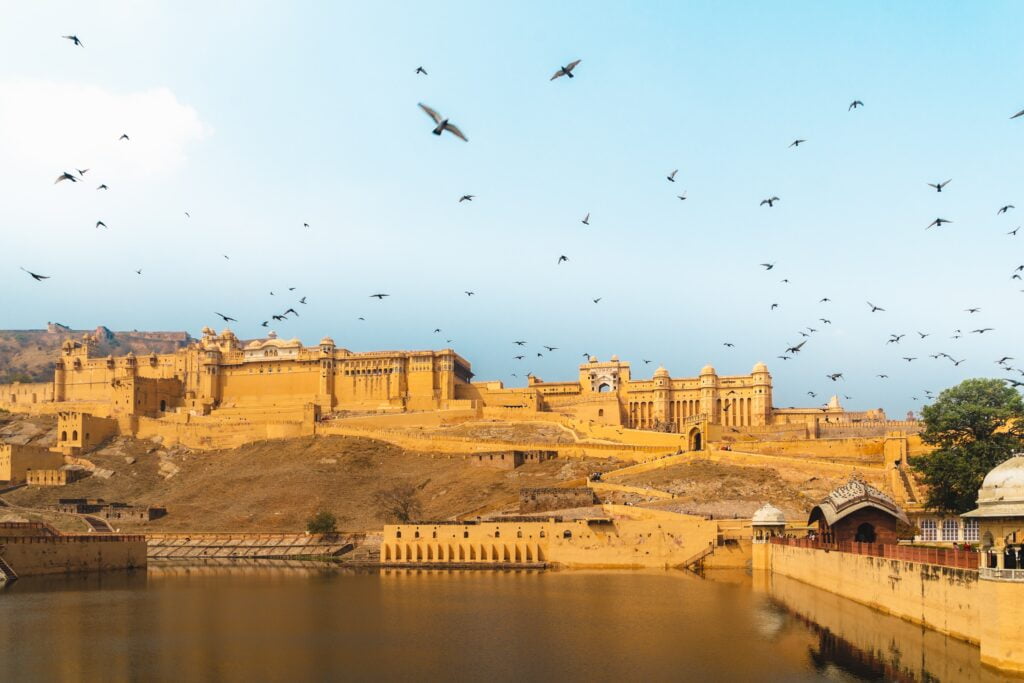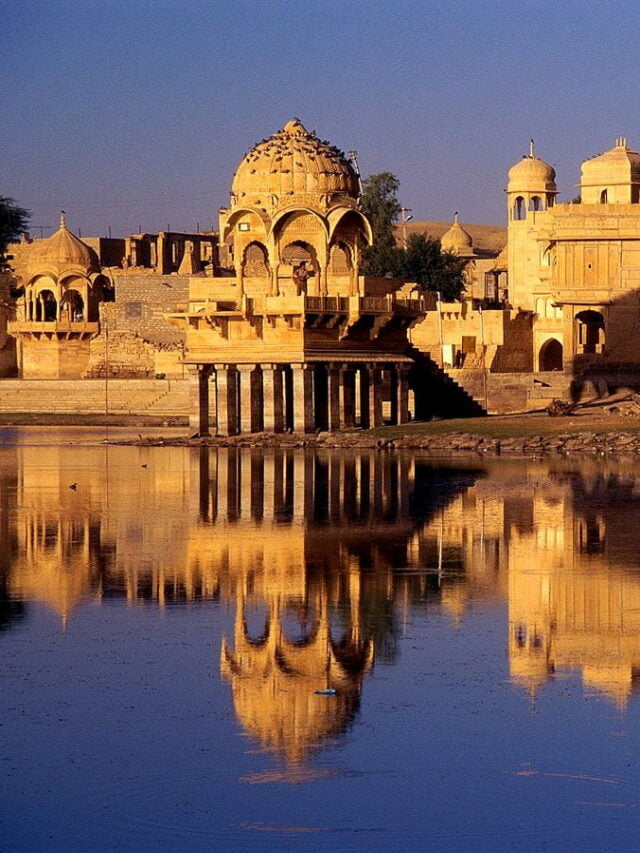Introduction:
Historical Forts: The towering palaces, vibrant customs, and wide deserts of Rajasthan are home to some of India’s most impressive medieval forts. These forts provide a window into the area’s architectural and cultural wonders and serve as a reminder of Rajasthan’s illustrious history. We’ll take a virtual tour of some of Rajasthan’s most notable historical forts in this blog post.
Amber Fort (Amer Fort): A Majestic Jewel Of Rajasthan’s Heritage
The Amber Fort, also known as the Amer Fort, is a must-see if you’re considering a trip to the beautiful Indian state of Rajasthan. This magnificent fort is a wonderful jewel of Rajasthan’s rich heritage and history and is located just a short drive from the busy city of Jaipur.
Featured Snippet
Rajasthan boasts a rich heritage of historical forts, each with a unique story to tell.
Amber Fort near Jaipur is a masterpiece of Rajput architecture, with captivating palaces and mirror work.
Mehrangarh Fort in Jodhpur stands atop a hill, offering panoramic views and a museum of Rajput artifacts.
Jaisalmer Fort, the “Golden Fort,” charms with its yellow sandstone architecture, havelis, and winding lanes.
Chittorgarh Fort, the largest in India, is steeped in Rajput legends of valor and sacrifice.
Kumbhalgarh Fort features the second-longest wall globally and a wealth of historical significance.
Junagarh Fort in Bikaner showcases Rajput might, opulent palaces, and a rich museum.
Rajasthan’s forts are living testaments to history, architecture, and the enduring spirit of the Rajputs.
A Royal Marvel Of Architecture
Rajput architecture is best exemplified by the Amber Fort, which is renowned for its complicated layout and artistic splendor. You’ll be astounded by the fort’s magnificence as you get closer. It is perched majestically on a hill and offers stunning views of Maota Lake. You can instantly be transported to a period of royal beauty just by looking at the surroundings.
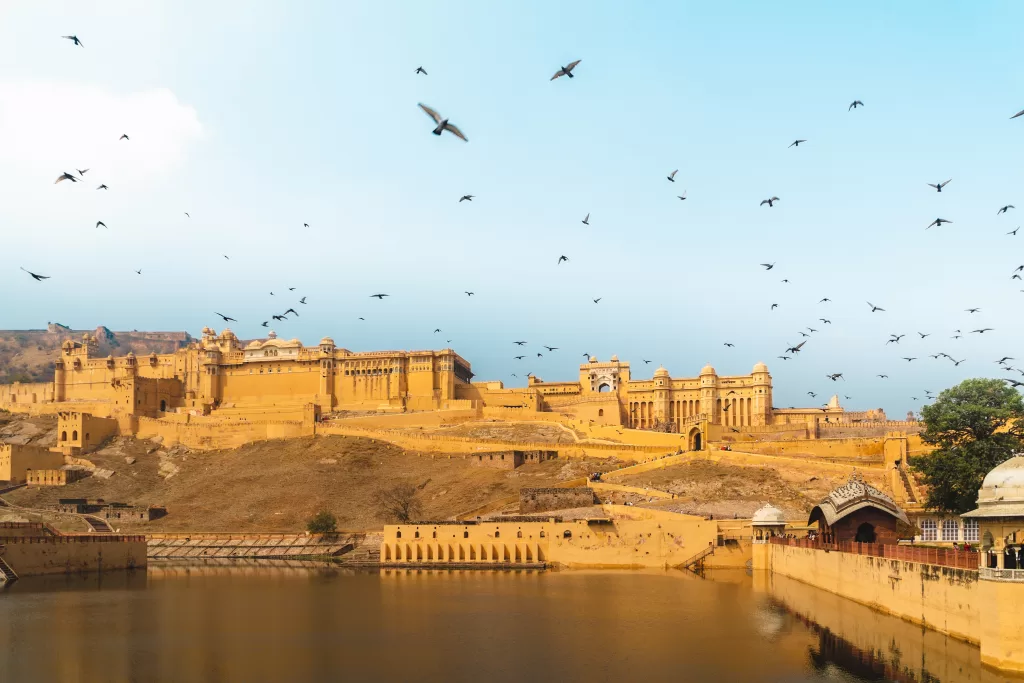
A Memorable Elephant Ride
The opportunity to ride an elephant up to the fort’s entryway is one of the unusual experiences available here. As you make your way up to the fort, this custom gives your visit an added layer of elegance and gives you a sense of nobility.
Inside The Fort’s Wonders
You’ll find a world of architectural wonders and historical significance as you enter the Amber Fort. Within the fort, a few of the must-see attractions are as follows:
Sheesh Mahal (Mirror Palace):
A captivating play of light is produced by the exquisite mirror work that adorns this glittering mansion. It is stated that because of the countless tiny mirrors, even one candle can illuminate the entire space.
Diwan-i-Khas (Hall Of Private Audience):
The monarch would meet with his trusted advisors in private here in this opulent hall. It is a significant historical location because of the ornately decorated pillars and the elevated platform for the king’s throne.
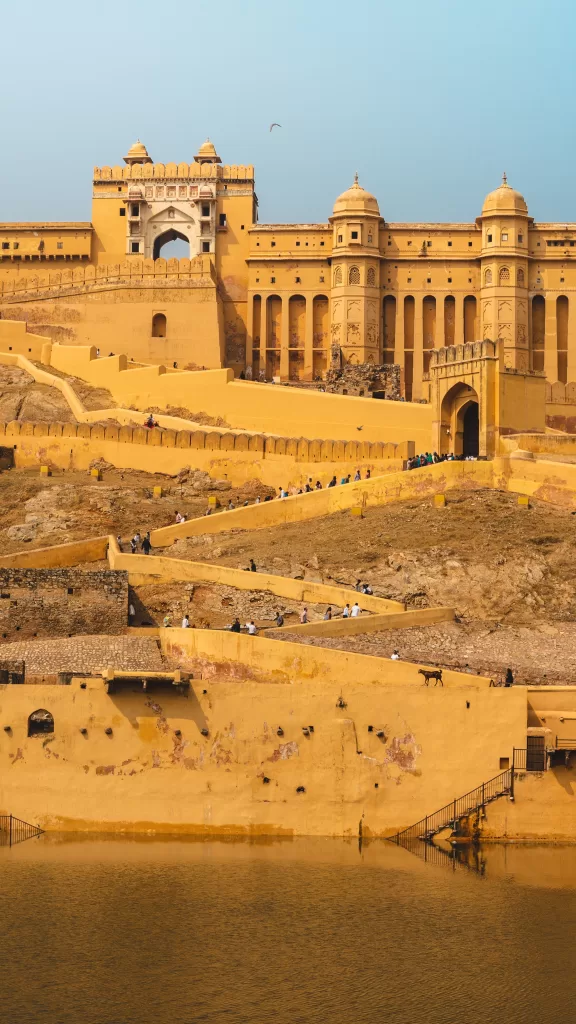
Captivating History And Culture:
You’ll be enthralled by the Amber Fort’s architecture as well as the rich history and culture it reflects as you tour it. The walls of the fort appear to reverberate with tales of the majesty and splendor of Rajput kings, who have witnessed the grandeur and glory of the fort.
Breathtaking Views:
Don’t forget to climb up to the top levels of the historical forts to take in the amazing panoramic views of the surroundings. Especially at sunrise and dusk, the view of the city of Jaipur and the serene Maota Lake from the fort’s ramparts is simply breathtaking.
Rajasthan’s regal heritage remains alive and well in the Amber Fort, also known as Amer Fort. It is a crucial stop on your Rajasthani tour because of its stunning architectural design, historical significance, and immersive experience. This fort will astound and amaze you whether you’re interested in history, architecture, or simply want a taste of regal Rajasthan. So be sure to leave aside time to discover the fascinating sights of the Amber Fort while you’re in Jaipur.
Don’t pass up the opportunity to ride an elephant up to the fort’s entrance; it’s a custom that adds to historical forts Amber Fort’s appeal. Explore the many palaces located inside, such as the Sheesh Mahal (Mirror Palace) and the Diwan-i-Khas (Hall of Private Audience), which each tell a unique tale of Rajasthani grandeur.
Mehrangarh Fort: Where the Blue City, Majesty, and History Meet
The magnificent Mehrangarh Fort is one of the many historical forts, which dominates the “Blue City” of Jodhpur, may be one of the first pictures that come to mind when you think about Rajasthan. This powerful fort, which is built atop a hill that rises 400 feet above the ground, is evidence of Rajasthan’s rich history and magnificent architecture.
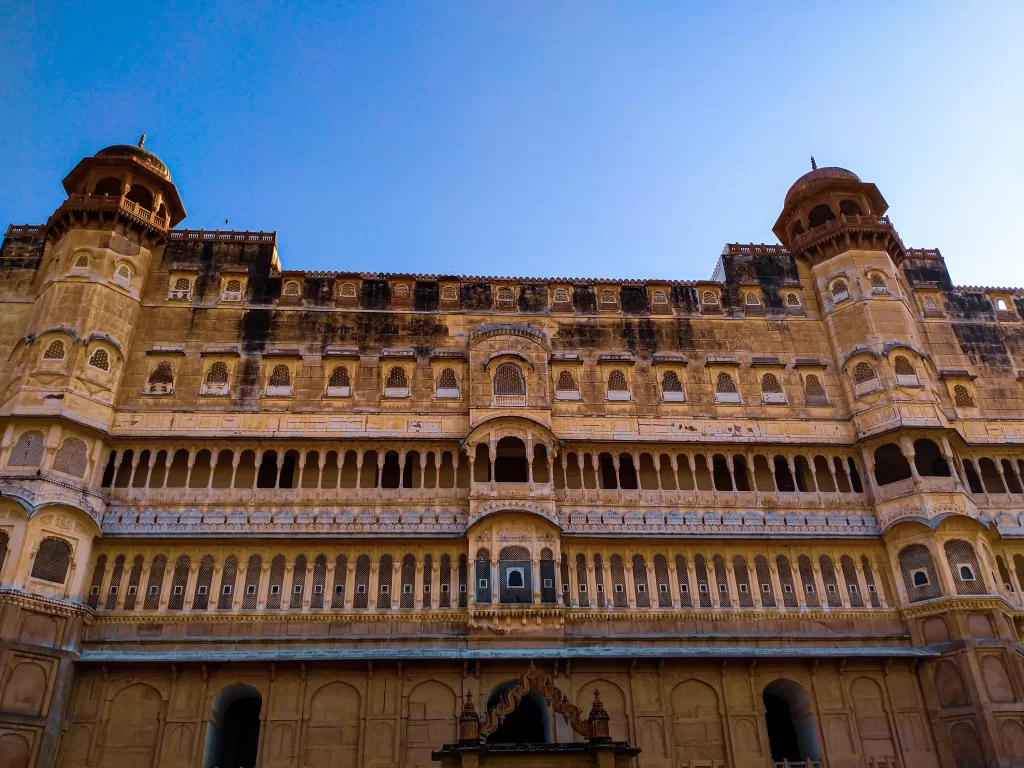
A Glimpse Of The Blue City
It’s challenging to overlook the massive historical forts the Mehrangarh Fort, which dominates the skyline of Jodhpur, as you approach the city. The fort is impressive because to its towering walls, some of which reach heights of 120 feet and widths of 70 feet. Its name, Mehrangarh, means “Fort of the Sun,” and when it is bathed in the sun’s golden rays, it definitely lives up to its reputation.
An Invulnerable Fortress
The building of Mehrangarh Fort is quite impressive. A tribute to the architectural skill of its architects is the nearly impenetrable nature of its walls. The complicated layout of the fort, with its seven gates, each with an own history and purpose, is a trip through time.
The Museum: A Treasure Trove Of History
A well-preserved museum that provides a thorough look into Rajasthan’s history may be found inside the fort. The museum is home to a sizable collection of antiques, including royal robes, palanquins, and a stunning selection of Rajput warriors’ weapons. Each exhibit recounts a tale and provides a detailed history of the area.

The Palaces: Elegance Beyond Measure Mehrangarh Is Not Just A Fortress;
It is a complex of palaces. You’ll come across a variety of palaces as you explore the interior chambers, each with an own charm. Among the notable palaces are:
Sheesha Mahal (Mirror Palace):
This mansion, which is decorated with elaborate mirror work, mesmerizes guests with its magnificence. It’s stated that candles may cast a magical glow across the entire space.
Phool Mahal (Palace of Flowers):
A palace where lavish feasts and royal celebrations were once held. It is a striking sight due to the intricate workmanship and colorful artwork.
Moti Mahal (Pearl Palace):
The royal court held audiences in this palace, which is renowned for its finely carved windows.
Spectacular Views
You’ll be treated to spectacular panoramic views of Jodhpur and the neighboring Thar Desert as you climb the ramparts of Mehrangarh Fort. A photographer’s paradise, the cityscape below is a sight to behold and features recognizable blue-painted buildings, especially at sunrise and dusk.
In addition to being historical forts, Rajasthan’s royal past is alive and well in the Mehrangarh Fort. It recounts tales of bravery, majesty, and the steadfast spirit of a proud land. Whether you’re a history buff, a lover of architecture, or just a traveler looking for breathtaking beauty, in historical forts Mehrangarh Fort ensures an experience you won’t soon forget.
It is a location where history is brought to life, where the past and present collide, and where Rajasthan’s pride beats with fervor. A journey through time and absorption in Rajasthan’s enthralling history can be had by visiting Mehrangarh historical Forts.
Jaisalmer Fort: The Golden Jewel of the Thar Desert
The Jaisalmer Fort, also known as the “Golden Fort,” stands as a testament to Rajasthan’s illustrious past and magnificent architecture and is also historical fort. This fort, which is a fascinating illustration of Indian history, is situated in Rajasthan, India, in the middle of the Thar Desert.
A Gilded Oasis in the Desert
The striking golden color of Jaisalmer Fort, which results from the use of native yellow sandstone during building, is what immediately catches your eye. You will be in wonder as you approach the fort, which appears to appear magically out of the huge desert terrain.
Historical Forts
Living History
Jaisalmer Fort, in contrast to many other forts that have been abandoned throughout time, is a flourishing, active and historical fort. You can find exquisite havelis (traditional houses), Jain temples, and bustling markets within its formidable walls, which are enclosed by twisting, narrow pathways. It’s like traveling back in time to explore the maze-like streets of the fort.
Architectural Marvels
There are several architectural wonders to be seen in Jaisalmer Fort.
Jain Temples:
These finely carved temples honoring Jain Tirthankaras are renowned for their masterful use of marble and sandstone.
Havelis:
Beautiful frescoes and ornate façade may be found on several of the fort’s havelis. Examples are Salim Singh Ki Haveli and Patwon Ki Haveli.
Palaces:
The Raj Mahal and the Jawahar Mahal are two palaces within the fort that stand out for their spectacular architecture and historical significance.
Sunset Magic
When the sun rises and sets, Jaisalmer Fort the one of historical forts acquires a wonderful quality. These moments are when the sandstone walls’ warm, golden glow is at its most alluring. Visit the fort’s ramparts for the best view of the sun illuminating the desert landscape with its flaming hues.
A Timeless Experience
The Jaisalmer Fort is a live example of Rajasthan’s culture and tradition, not just a historical relic. An immersive experience is created by the bustling bazaars, the animated conversation of people, and the aroma of traditional Rajasthani food drifting through the air.
In conclusion of historical forts, Jaisalmer Fort should not be missed by anyone visiting Rajasthan as this is also worth seeing historical fort. It is more than just a fort; it is a physical representation of Rajasthan’s past and present. Its golden walls, exquisite architecture, and lively atmosphere provide you with a lasting impression of this place and historical forts.
A place that offers a trip back in time, Jaisalmer Fort is a veritable gold mine of tales and a testament of Rajasthan’s enduring spirit. So be sure to see this golden oasis in the middle of the desert when you’re in Rajasthan; you won’t be sorry.
Chittorgarh Fort: The Symbol Of Rajput Valor And Romance
The Chittorgarh Fort is also one of the many historical forts, located in Rajasthan, India, is the pinnacle of Rajput pride, bravery, and enduring tales of sacrifice and love. One of the biggest forts in India, this enormous structure has seen innumerable conflicts and serves as a reminder of Rajasthan’s lengthy history.
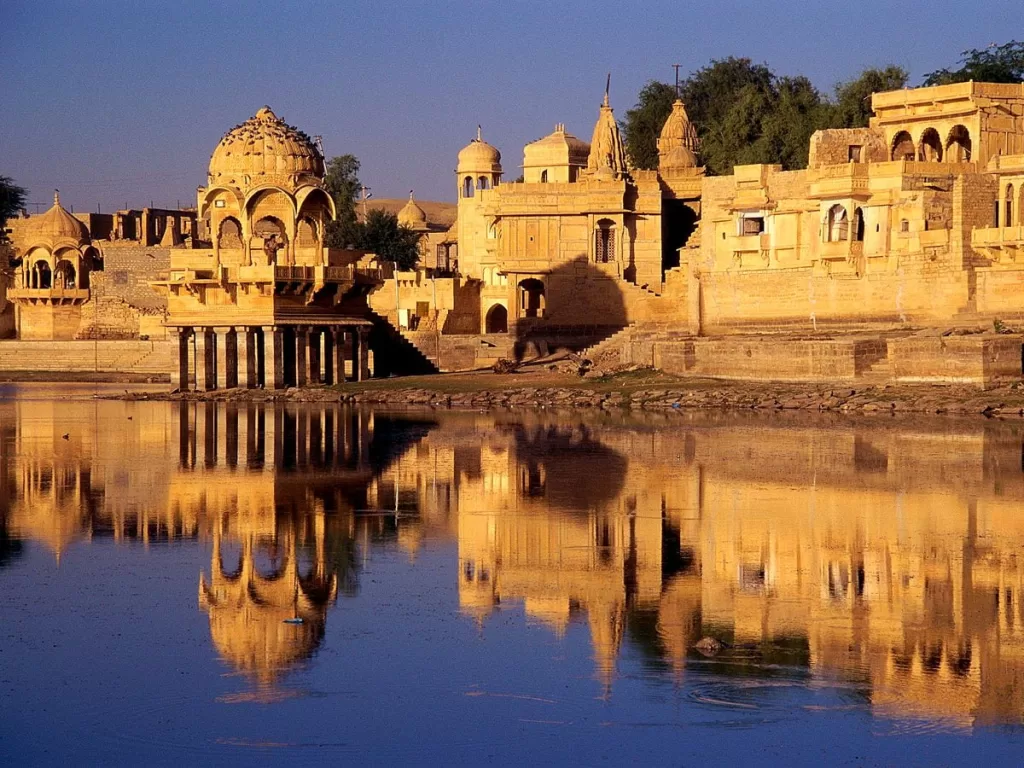
A Citadel Of Legends
Chittorgarh Fort which is one of the many historical forts is enveloped in heroic and honorable legends. It was established by the Maurya dynasty in the seventh century, which is when it first appeared. Numerous Rajput kings who ruled over it over the years contributed to its magnificence.
The Impenetrable Walls
The huge walls of Chittorgarh Fort, the largest fort in India by perimeter, are among its most prominent features. They stretch for more than 13 kilometers. These walls, which can be up to 120 feet high in certain areas, serve as a reminder of the fort’s impregnability.
The Vijay Stambh: Tower Of Victory
You will pass by the magnificent Vijay Stambh (Tower of Victory) as you enter the fort. Maharana Kumbha erected this magnificent edifice to mark his victory over the Sultan of Malwa. You can ascend the fort’s spiral staircase to the top for sweeping views of the surrounding landscape and the fort.
The Kirti Stambh: Tower Of Fame
The Kirti Stambh (Tower of Fame) inside the fort is another outstanding building. This tower is embellished with elaborate Jain carvings and sculptures, which highlights the period’s aesthetic brilliance and religious concord.
The Rana Kumbha Palace
Entering the Rana Kumbha Palace is like traveling back in time to the Rajput dynasty. It is thought that Maharana Pratap, a great warrior, was born in this castle. It is a must-see because of its exquisite architectural design and historical value.
The Legend Of Padmini
The story of Rani Padmini and Chittorgarh Fort which is one of the historical forts are both well known. Alauddin Khilji reportedly besieged the fort because of her beauty, according to folklore. The Jauhar Kund serves as a somber remembrance of this horrific incident, where women self-immolated to avoid capture.
A UNESCO World Heritage Site
Historical Forts: Chittorgarh Fort was recognized as a UNESCO World Heritage Site in honor of its historical importance and architectural magnificence. It serves as both a physical monument and a living archive of Rajasthan’s past.
Not only a fort, Chittorgarh Fort is a living tale. Its imposing walls, opulent palaces, and heroic tales inspire a strong sense of appreciation and reverence for Rajasthan’s cultural legacy and a historical fort.
A trip to Chittorgarh Fort which is one of many historical forts is an opportunity to travel back in time, see the grandeur and romance of Rajasthan’s past, and follow in the footsteps of great Rajput warriors. It’s a location where history is alive and well, and the wind is filled with the echoes of bravery and love. Explore this representation of Rajput pride and tenacity while you’re in Rajasthan; it’s a journey you won’t soon forget.
Kumbhalgarh Fort: The Guardian of Rajasthan’s Great Wall
Kumbhalgarh historical fort is a powerful bastion that stands as a sentinel of the state’s history and architectural magnificence, nestled among the rough Aravalli Hills in Rajasthan’s Mewar area. This fort is a tribute to Rajput bravery and resourcefulness and is known for its huge wall, which is second in length only to the Great Wall of China.
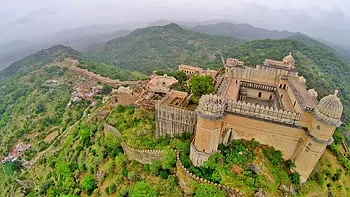
The Impenetrable Wall
The 36-kilometer-long, towering wall that runs along the fort’s outside is its most impressive feature. The entire Mewar province was to be surrounded by this wall, which Rana Kumbha constructed in the 15th century as a defense against invasion. The wall is impressive in both size and strength.
A Fort of Legends
Kumbhalgarh is rich with heroic and self-sacrificing stories. It has been a stronghold of Rajput resistance and has witnessed numerous conflicts. Rajput warriors like Maharana Pratap, who used the fort as a haven during his fights with the Mughals, are essential to the history of the historical forts.
The Maha Sati
You may find the Maha Sati inside the fort, a stunning temple honoring the spouses of the emperors who committed suicide during battle to evade enemy captivity. This temple serves as a testament to the selfless sacrifice and unwavering spirit of Rajput women.
The Badal Mahal
The Badal Mahal, or Palace of Clouds, is one of Kumbhalgarh Fort’s most exquisite buildings. This palace offers breathtaking all-encompassing views of the hills and valleys nearby. It’s a great site to picture Mewari royalty taking in the breathtaking views and pleasant breezes.
The Temples Of Kumbhalgarh
The Neelkanth Mahadev Temple and the Vedi Temple are only two of the intricately sculpted temples that can be found inside the fort. Within the imposing walls of the fort, these temples provide a spiritual haven while also showcasing the best of the time’s architecture.
A UNESCO World Heritage Site
Kumbhalgarh Historical Fort was named a UNESCO World Heritage Site in honor of its historical importance and architectural magnificence. It is more than simply a fort; it serves as a living reminder of Rajasthan’s past and a testimony to the tenacity and bravery of its inhabitants.
More than merely a historical forts, Kumbhalgarh Fort is a trip through time. Deep appreciation for Rajasthan’s history is sparked by its imposing walls, magnificent palaces, and the heroic legends that surround it. A trip to Kumbhalgarh Fort offers the chance to experience Rajasthan’s grandeur and history of many historical forts while following in the footsteps of Rajput warriors and admiring the past’s architectural marvels.
It’s a location where the wind echoes the sacrifice and valour of the past, and where the brave spirit of Mewar’s past still stands tall. Don’t miss the chance to discover this Great Wall protector while you’re in Rajasthan since it will leave you in awe of India’s rich cultural legacy.
Junagarh Fort (Bikaner): A Timeless Marvel Of Rajput Heritage
The Junagarh Fort, which is located in the center of the energetic city of Bikaner, Rajasthan, is a remarkable tribute to the bravery, skill, and architectural genius of the Rajput dynasty. the one of historical forts Junagarh Fort, unlike many other forts in Rajasthan, has the distinction of never having been conquered, making it a representation of Rajput strength and fortitude.

A Fortress Unconquered Historical Fort
Junagarh Fort, known for its impregnability and is one of the historical forts of Rajasthan, was built in the 16th century by Raja Rai Singh, a dependable general in the court of Emperor Akbar. This outstanding feat of fortification is a tribute to the architects’ brilliant use of strategy. It’s impressive to see the fort’s thick walls, which are lined with bastions and protected by moats.
Palaces Of Opulence
You’ll find a treasure trove of palaces and pavilions inside the historical fort’s enormous walls, each more lavish than the last:
Anup Mahal (Hall of Public Audience):
The kings met with nobility and foreign dignitaries in this splendid hall. The finery of Rajput royal life is reflected in the beautiful frescoes, gold leaf decoration, and delicately carved wooden ceilings.
Phool Mahal (Flower Palace):
In keeping with its name, this palace is a floral haven. Its walls are decorated with lovely floral patterns, and the stained glass windows give the space an air of mysticism.
Karan Mahal:
This is a beautiful illustration of how Rajput and Mughal architectural styles may coexist. You are immediately transported to an opulent bygone era by the beautiful mirror work and bright paintings.
A Museum of Treasures
Additionally, the Junagarh Fort is home to a museum with a magnificent collection of antiques. The museum offers a fascinating look into the lives of Rajasthan’s royals through its collection of antiquated Rajput weapons, including swords and daggers, exquisite royal garments, and priceless jewels.
Architectural Fusion
The diversity of the architecture at Junagarh Fort is one of its most impressive features and historical forts of Rajasthan. It displays a tasteful synthesis of many aesthetics, including Gujarati, Rajput, and Mughal influences. The fort’s design exemplifies the artistic skill and attention to detail of the time with its superb craftsmanship.
More than just a historical landmark, Junagarh Fort is also a historical forts is a living reminder of Rajasthan’s illustrious past. Visitors will have an unforgettable experience because to its formidable walls, opulent magnificence, and rich history.
A trip back in time, an opportunity to admire historical architectural marvels, and a chance to become fully immersed in Rajasthan’s grandeur and history may all be had by visiting Junagarh Fort. It is a location where the magnificence and echoes of Rajput royalty still reverberate. Don’t miss the opportunity to visit this timeless masterpiece of Rajput tradition while you’re in Bikaner; it’s a journey into the heart of Rajasthan’s imperial legacy.
Conclusion
The medieval forts of Rajasthan are not just works of art; they are also living legends that tell the stories of the state’s illustrious history and rich heritage. Every fort is different, showing the aesthetic sophistication of its time and the unbreakable spirit of its inhabitants.
It is like traveling back in time to explore these forts, experiencing the splendor and magic of Rajasthan’s past. Rajasthan’s historical forts are certain to create a lasting impression on your heart and mind, whether you’re a history enthusiast, an admirer of architecture, or simply a traveler looking for cultural richness. Plan your trip to Rajasthan accordingly and listen to the forts’ enduring tales.

